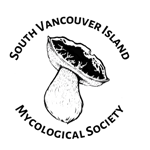7 pm – doors open
7:15-7:30 – meeting begins
3821 Cedar Hill X Rd, Victoria BC
Presentation by Karen Golinski
Collections Curator, Bryophytes, Lichens and Fungi
Fungal collections at the UBC Herbarium: Overview and recent developments
Karen Golinski is a bryologist and Collections Curator of the Bryophyte, Lichen and Fungi collections at the University of British Columbia Herbarium. She earned her PhD from the University of Victoria. Prior to beginning her current position at UBC in 2020, she worked on the US Herbarium bryophyte collection in the Smithsonian National Museum of Natural History in Washington, DC. Karen has a strong interest in bryophyte biodiversity and conservation, and served on the Mosses and Lichens subcommittee of COSEWIC (Committee on the Status of Endangered Wildlife in Canada) for many years. Currently she is a member of the IUCN SSC Bryophytes Specialist group.
The UBC Herbarium in the Beaty Biodiversity Museum holds more than 91 thousand accessioned dried fungus and lichen specimens, serving as a key resource for fungal and lichenological research, university education and public outreach. The two collections, which emphasize B.C. specimens, are housed in 90 specially-designed cabinets in a unique, publicly-accessible space. Specimen cabinets are punctuated by stunning displays, including shadowboxes illustrating a species of Cortinarius named for Oluna Ceska, and an artful presentation of the Sherman Brough lichen-dyed wool collection.
UBC is part of a global effort to increase the visibility and usability of herbarium collections by making data and images available online through publicly-accessible data portals. We deeply appreciate the pioneering efforts of Dr. R.F. Scagel, who initiated the process of recording UBC specimen metadata in 1981. With the assistance of student and community volunteers, we have made substantial progress in processing a large backlog of specimens. Soon, with the help from mycological community members, we will start uniting specimen records with images from the Mushroom Observer and other sources to further facilitate biodiversity discovery and appreciation.


